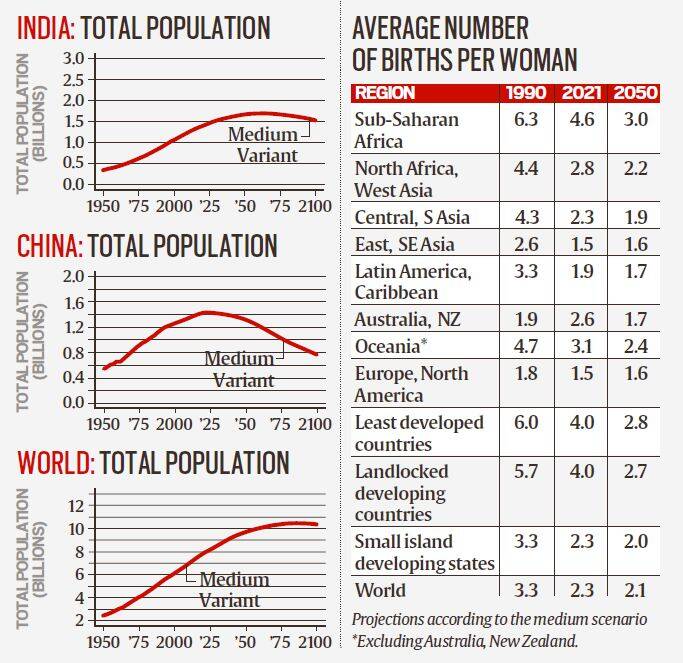ForumIAS announcing GS Foundation Program for UPSC CSE 2025-26 from 19 April. Click Here for more information.
ForumIAS Answer Writing Focus Group (AWFG) for Mains 2024 commencing from 24th June 2024. The Entrance Test for the program will be held on 28th April 2024 at 9 AM. To know more about the program visit: https://forumias.com/blog/awfg2024
Source: The post is based on the article “UN population report explained: A look at the trends, projections and implication” published in Indian Express on 12th July 2022.
What is the News?
The United Nations(UN) has released the World Population Prospects(WPP) Report 2022.
What is the World Population Prospects(WPP) Report?
Published by: Population Division of the UN has been publishing the WPP in a biennial cycle since 1951.
Purpose: To provide an overview of global population trends focusing on the period from 1950 to 2050 and present a summary of key demographic prospects during the second half of the present century.
What are the key highlights from the report?

Global findings
World Population: The world’s population could grow to around 8.5 billion in 2030 and 9.7 billion in 2050, before reaching a peak of around 10.4 billion people during the 2080s. The population is expected to remain at that level until 2100.
Slowest Growth rate: Global population is growing at its slowest rate since 1950, having fallen to less than 1% in 2020.
Fertility Rate: Fertility has fallen markedly in recent decades for many countries. Currently, two-thirds of the global population lives in a country or area where lifetime fertility is below 2.1 births per woman.
Impact of Covid-19: The COVID-19 pandemic has had an effect on population change: global life expectancy at birth fell to 71 years in 2021 (down from 72.9 in 2019).
Growth Concentrated in Eight Countries: More than half of the projected increase in the global population up to 2050 will be concentrated in eight countries: the Democratic Republic of the Congo, Egypt, Ethiopia, India, Nigeria, Pakistan, the Philippines and the United Republic of Tanzania.
Older Population: The population of older persons is increasing both in numbers and as a share of the total: The share of the global population aged 65 years or above is projected to rise from 10% in 2022 to 16% in 2050.
Increase Working Age Population: A sustained drop in fertility has led to an increased concentration of the population at working ages (between 25 and 64 years), creating an opportunity for accelerated economic growth per capita.
International Migrants: Around ten countries experienced a net outflow of more than 1 million migrants between 2010 and 2021.
Findings related to India
India’s Population: India is projected to surpass China as the world’s most populous country in 2023.
– Currently, India’s population stands at 1.412 billion in 2022 compared to China’s 1.426 billion.
– India which will surpass China as the world’s most populous nation by 2023 is projected to have a population of 1.688 billion in 2050 which will be way ahead of China’s 1.317 billion people by the middle of the century.




